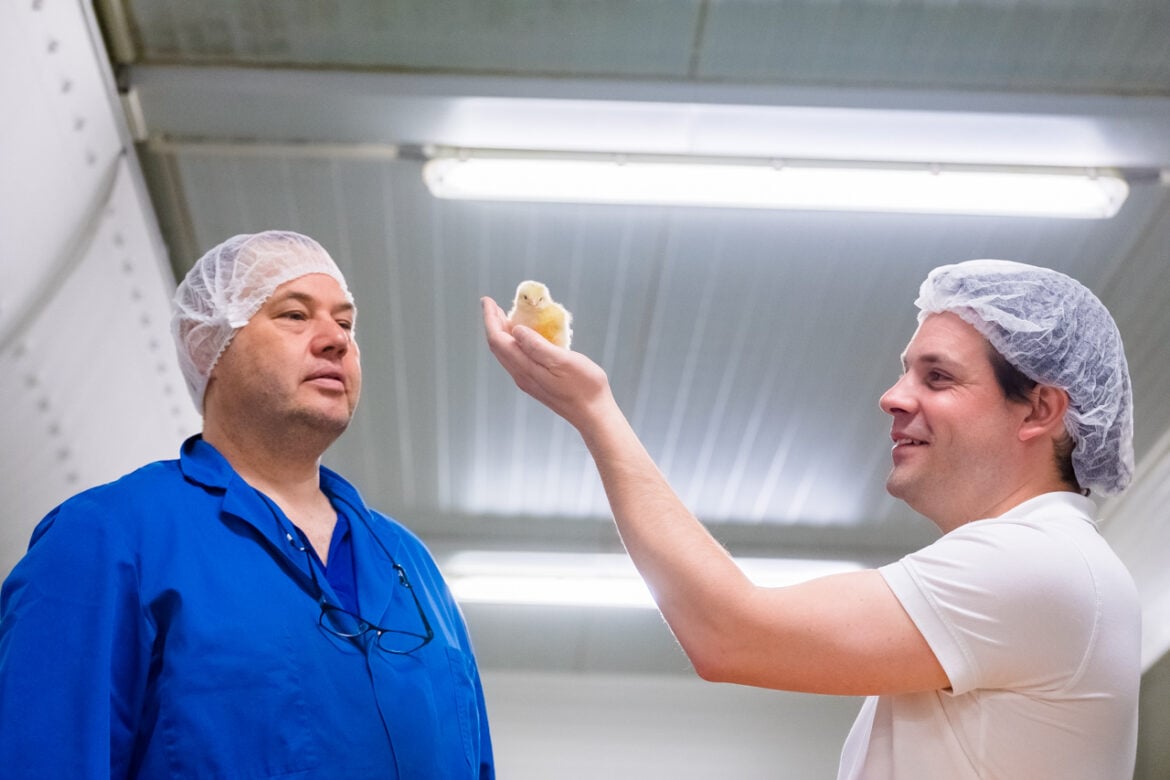
After chicks have been transported incorrectly, they can start to show signs of a decrease in growth and performance. In this article we dive deeper into the origin of this problem and the relation between poultry transport and chick growth.
What Influences Chick Growth
A steady development is a great indicator of a healthy chick. A good quality chick gains weight daily. But there are some factors that can stand in the way of chick growth. If a chick has to overcome challenges like stress, diseases or infections, the energy gained from feeding is not used for growth. Instead the energy is required to recover from these challenges.
Growth Determines Poultry Performance
Chick growth is a strong indicator for the performance of chicks. Several variables are to be used to keep track of the performance of chicks. The water feed-ratio, growth per day (in kg), mortality rate and feed conversion ratio. These parameters are used to determine the Poultry Efficiency Factor (PEF). It can be calculated as follows:
PEF = (liveweight (kg) x liveability (%))/(age at depletion (days) x FCR) x 100
A high outcome (PEF), indicates a great performance. Desirable scores are between 300 and 400. However, top producers have PEF scores of 400 or higher. The highest scoring producers based on PEF are even being awarded.
How Transport Affects Chick Growth and Performance
Poultry transport cannot improve the quality of a day-old chick, but it can certainly harm it. If a situation is created where chicks remain calm during transport, they won’t waste any energy, enabling them to grow. The main reason why chicks use up energy while being transported, is thermoregulation. How well the transport system is able to maintain the right temperature, determines the energy consumption of chicks. The influence of this is often underestimated. An embryo or day-old chick that has been transported in conditions that are below the standard, will suffer from performance loss in their production cycle. Therefore it is important to measure decisive factors like: water/weight loss, cloaca temperature on arrival, mortality on arrival or after seven days, and behaviour.
Negative effects during transport
Bird growth is affected by energy-consuming behaviour. Behaviour of chicks should be monitored and understood by the people operating the transport system.
Day-old chicks start heating themselves when the temperature is too low, by burning nutrients from the yolk sac. Chicks originating from a young parent stock are smaller in size and thus more susceptible to hypothermia. Too low temperatures during transport will have negative effects later. This can be seen in seven day mortality figures, but also by chicks having black vents and a low flock uniformity.
Panting is behavior that occurs when chicks respire more quickly due to overheating. Water will evaporate from the yolk sac, in an attempt to cool down. By doing this, chicks use up energy that would otherwise be used for growth. Temperature deviations should be avoided to prevent this unnecessary loss of energy.
Chicks originating from older parent stocks are larger in size, making them more susceptible to overheating. Immediate effects that can appear are unconsciousness and death on arrival.
Overheating During Unloading
During loading and unloading of chicks, special care is required. During this time, the forced ventilation of the truck will stop. This creates a risk of chicks overheating themselves. This problem can be solved by unloading quickly and immediately creating space between the trolleys and preferably also the chick boxes. A major share of transport deaths occur during unloading. Even in cold circumstances the overheating of chicks in the middle stack can occur. To prevent this form of unnecessary energy consumption among chicks, unloading should be done quickly and efficiently.
Chick growth and performance will be unaffected when chicks are transported in a well-climatized environment. At Heering, we create poultry transport systems that keep hatching eggs, day-old chicks and live chicken in perfect condition.
Do you want to learn more about our solutions? Feel free to reach out to us.